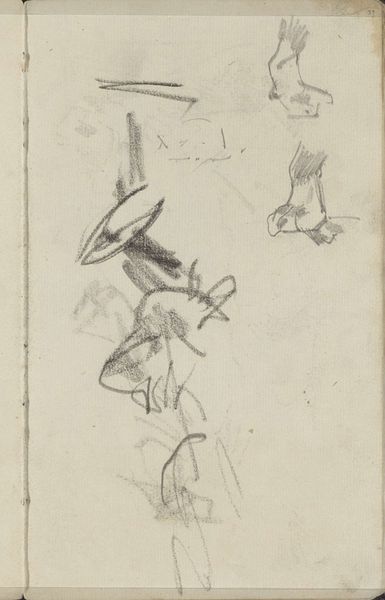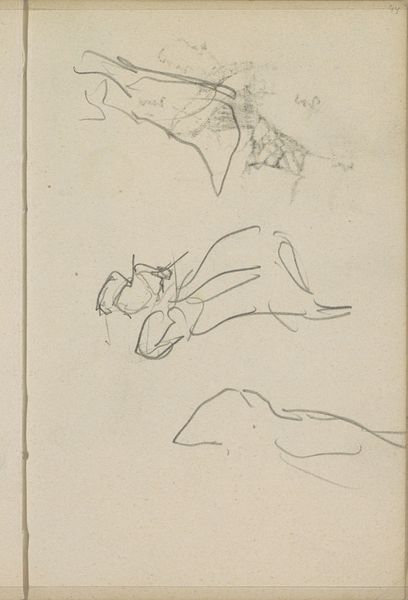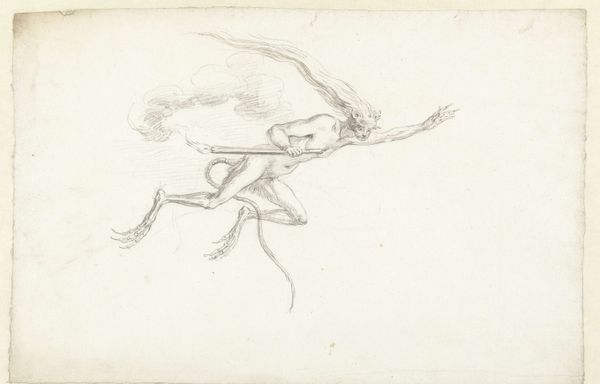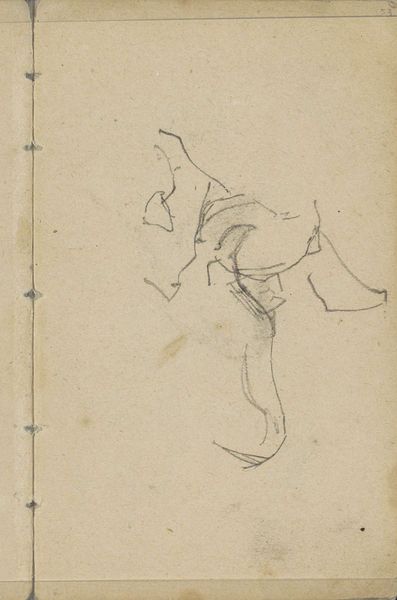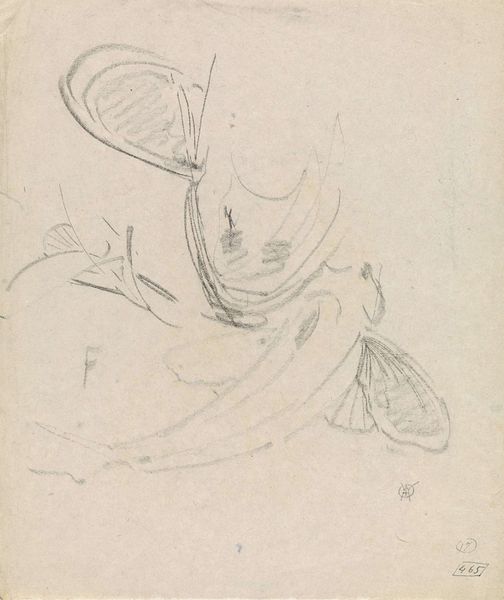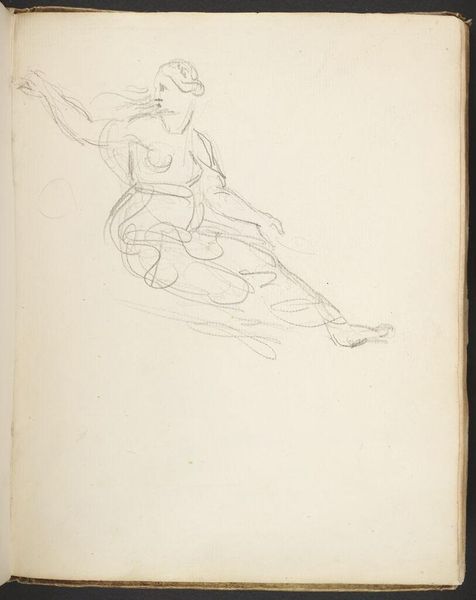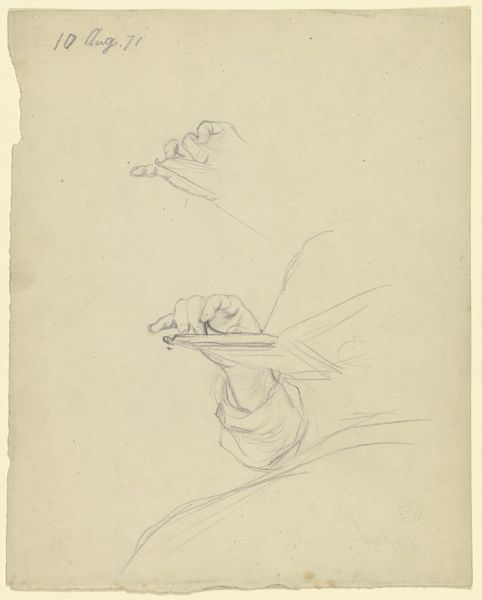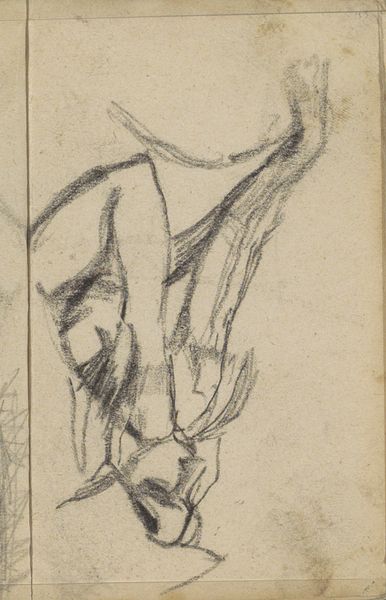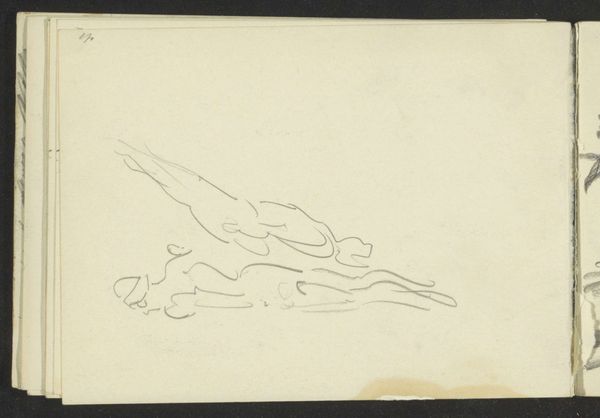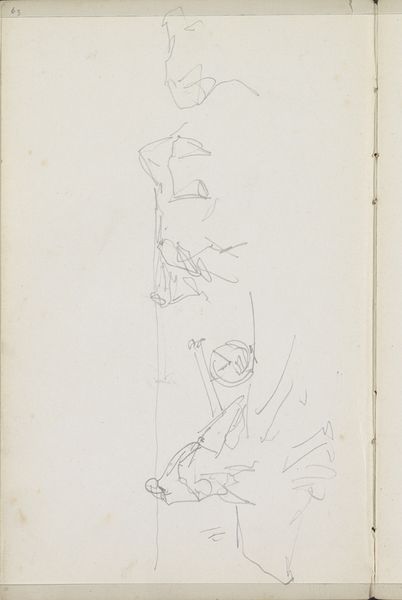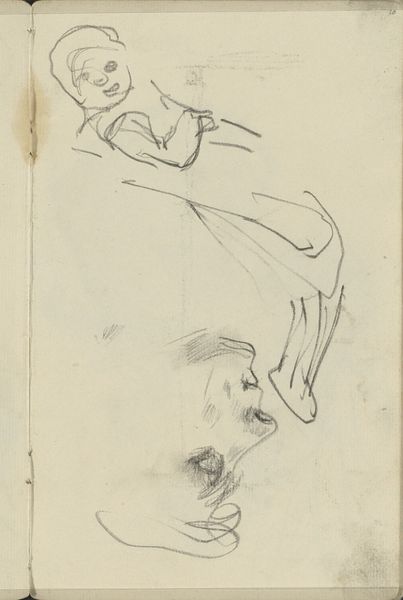
drawing, pencil
#
drawing
#
pencil sketch
#
landscape
#
figuration
#
romanticism
#
pencil
#
realism
Copyright: Rijks Museum: Open Domain
Curator: Before us is "Hertengewei en een liggende herder" – a pencil drawing by Johannes Tavenraat, dating back to 1840. Editor: It's striking how ethereal it feels, like a dreamscape captured in graphite. The composition, particularly the placement of the antlers against the figure, is quite dynamic despite the sketch's subdued tone. Curator: Precisely. Tavenraat’s deft use of line weight is evident, especially in rendering the texture of the antler’s surface. We can analyze the precise application of hatching and cross-hatching to produce shading and the three-dimensional qualities within this mostly tonal work. Note how the careful arrangement generates a symbolic counterpoint. Editor: Speaking of texture, what paper did he use? And the pencils... were these locally sourced graphite, influencing the subtleties of shade? This raw material dictated Tavenraat’s craft. Also, what were the economic pressures driving him? Was drawing more accessible than painting given material costs? These factors shape the narrative. Curator: These questions move beyond what’s apparent in the artwork's formal properties. Yet if we examine Tavenraat’s approach through the tenets of Romanticism, the visual dialogue between nature – symbolized by the antlers – and humanity can reveal its complex intellectual layers. This approach encourages interpretation within established visual syntax. Editor: The reality of creation is in how it was achieved and whom it represents. Let us imagine the material production of pencils available at this moment in time for a broader understanding of social constructs depicted through art history. And to that I must pose: Who was this shepherd, actually? What sort of labor filled his days? Curator: A reading through Realism grounds the subject further, while retaining an engagement with nature which the period held to elevated aesthetic standards, although one cannot discard a symbolic context. Editor: We come closer to appreciating the human conditions embedded in Tavenraat’s time and artwork once materiality and production get acknowledged – not just symbolism. Curator: I concur that its context contributes profound depth to understanding its form. Editor: Yes, by investigating what was available to be used, we truly grasp that art can exist from multiple social viewpoints within its formal structure.
Comments
No comments
Be the first to comment and join the conversation on the ultimate creative platform.

